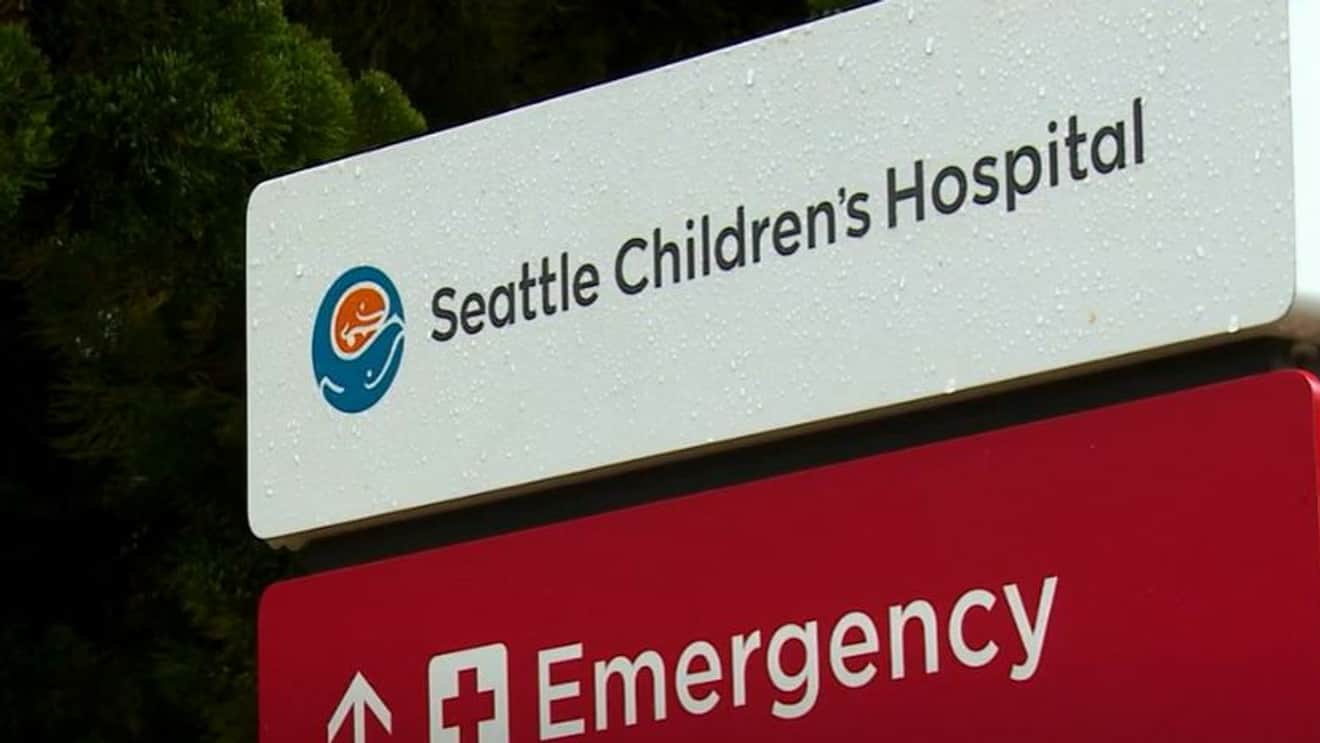“We accept new patients ages 9 to 16,” the site reads. “Patients ages 17 and older and patients who have not yet started puberty will be directed to community resources.”
Seattle Children’s Hospital’s Gender Clinic offers patients a wide range of services, such as puberty blockers, cross-sex hormones, and gender-affirming surgeries – all starting from the ripe old age of 9.
The clinic accepts new patients as young as 9 years old and “sees patients who have begun to show signs of puberty development. Gender-affirming medical care, such as puberty blockers, are not considered until patients have begun puberty development.”
“We accept new patients ages 9 to 16,” the site reads. “Patients ages 17 and older and patients who have not yet started puberty will be directed to community resources. Our clinic primarily provides gender-affirming medical care (such as puberty blockers and gender-affirming hormones).”
“Brief mental health support focused on family decision making and mental health documentation prior to initiating gender-affirming care is also available. If you are looking for gender-affirming mental health services only, or for ongoing mental health support, here are some community resources.” For more in depth mental health treatment, they recommend another provider.”
According to their website, “Seattle Children’s Gender Clinic provides gender-affirming medical care for adolescents: Whose gender identity is different from their sex at birth; Who do not identify with the traditional definitions of male or female.”
Additionally, “For prepubertal children, caregivers can offer support around gender exploration and social transition, including learning about gender diversity, connecting with other families of gender diverse children, connecting with affirming primary care and mental health providers, and advocating for children in school and legal settings.”
In order to undergo gender-affirming genital procedures like penile inversion vaginoplasty, peritoneal vaginoplasty, orchiectomy and phalloplasty, individuals must be 18 years of age or older by the time they receive their surgery.
The Surgical Gender Affirmation Program, however, strictly serves “teens and young adults” as proclaimed on their website. For most services, Seattle Children’s offers services to patients from birth up until their twenty-first birthday. For gender-affirming surgery, “We provide gender-affirming surgery for persons up to age 26.”
“We work closely with patients and families to make decisions about surgery age and timing. For gender-affirming genital procedures, patients must be 18 or older by the time of surgery. For other surgeries, timing depends on many factors, like the patient’s stage of puberty and how surgery fits with the rest of their gender-related healthcare. A typical age is mid-teens or older.”
Procedures include removing “the penis and testicles. They make a tunnel in front of the rectum and use skin from the penis to line the tunnel. They might use skin from the scrotum or another part of the body, like the thigh. The surgeon also makes inner and outer labia and a new opening for urine. They can use tissue from the penis to make a clitoris.”
The clinic’s website does acknowledge that “People who may want to have biological children in the future can choose to have their sperm frozen and stored before surgery to remove the testicles.”
During a peritoneal vaginoplasty, a method is used to “reconstruct a person’s vagina or to make a vagina in a person assigned male at birth. The surgeon makes a vaginal canal using tissue from the lining of the abdomen (peritoneum). Based on the patient’s needs and wishes, the surgeon may also make inner and outer labia and a new opening for urine. For patients with a penis, the surgeon can use tissue from the penis to make a clitoris.”
“Another way to reconstruct or make a vagina is to use a section of the bowel. Usually, this is not the first choice for gender-affirming surgery, but it may be an important option for someone who wants revision of an earlier surgery (like a penile inversion or peritoneal vaginoplasty). Based on the patient’s needs and wishes, the surgeon may also make inner and outer labia and a new opening for urine. For patients with a penis, they can use tissue from the penis to make a clitoris,” the site reads.
“Some people decide to have surgery to make a vagina with a canal that is shorter than typical. This is 1 of many ways that surgery choices depend on the patient’s goals for how their body will look and work after they heal. In minimal-depth vaginoplasty, the surgeon makes a clitoris, inner and outer labia, an opening for urine and an opening of the vagina with a short vaginal canal.”
A phalloplasty “done in stages over several months, can make a penis for someone assigned female at birth. The surgeon may make the penis using tissue from the vulva, forearm, thigh or side. Based on the patient’s needs and wishes, the surgeon may also do procedures to make the urethra longer, make a tip for the penis, make the scrotum and add testicle implants, put in an implant to make erections possible and close the opening of the vagina.”
Another option is a metoidioplasty, “For a person with a clitoris and labia, surgeons may be able to use these tissues to make a penis. This is done after the person has been on testosterone therapy, which will make the clitoris larger. Based on the patient’s needs and wishes, the surgeon may also make the urethra longer, make the scrotum and add testicle implants and close the opening of the vagina.”
Though the above surgeries are for those 18 and older, for other surgeries, “timing depends on many factors, like the patient’s stage of puberty and how surgery fits with the rest of their gender-related healthcare. A typical age is mid-teens or older.”
Individuals under 18 are provided a variety of services designed to support their journey, including puberty blockers, double mastectomies with or without free nipple grafting, breast augmentation, thyroid cartilage surgery and facial gender-affirming surgery.
The clinic offers “Facial gender-affirming surgery” to modify the facial features and make them appear more masculine or feminine. The surgeries provided at the clinic include forehead reduction, augmentation of brows/forehead, frontal sinus setback, fat grafting in face, cheek enhancement , rhinoplasty (nose reshaping) , genioplasty(chin modification), mandible contouring (lower jaw shaping ) as well as several others.
The clinic also provides Thyroid cartilage surgery which “can make the Adam’s apple (thyroid cartilage) less visible (laryngochondroplasty) or more visible (thyroid cartilage enhancement).”
At the Seattle Children’s Gender Clinic, patients can receive so-called “Top Surgery” including “Gender-affirming breast augmentation with implants or fat grafting, Gender-affirming mastectomy with or without free nipple grafting, and Gender-affirming breast/chest reduction.”
Our clinic offers Gender-affirming body contouring treatments such as liposuction and fat grafting “to shape a person’s body to better match their gender identity.”
Additionally, the clinic provides Revision surgery for gender-affirming surgery “If the results of gender-affirming surgery do not meet the patient’s needs or goals, our experienced surgeons may be able to offer options to improve the results. We have done surgeries like this for people who had their earlier gender-affirming surgery at other hospitals.”
Gender-affirming medical care (including puberty blockers, estradiol, and testosterone) must have the explicit consent from all adults with legal rights to make decisions on behalf of them. Our team can answer any questions related to this process if needed.
The website also mentions that under Washington state law, “adolescents have the right to seek medical care for the following conditions, even without parent or caregiver consent: Birth control and pregnancy-related treatment, Mental health conditions if 13 or older, Alcohol and drug problems if 13 or older, Sexually transmitted infections, including HIV/AIDS testing, if 14 or older.”
As part of its mission to provide support, the Seattle Children’s Gender Clinic partners with the Autism Clinic since many teens struggling with gender dysphoria also have an autism diagnosis. The website notes that one of the “team’s recent research projects and publications” is focused on “Autism and gender diversity.”
The clinic does offer “brief mental health support” and the first appointment before procedures “may be with a mental health therapist (for patients 13 years and older) before you see a medical provider.” However, they do note that “we do not offer ongoing mental health therapy appointments.”
The “Q Card Project” has joined forces with Seattle Children’s Hospital to create the “Gender Card,” which is being handed out by local pediatricians. Intended as an aid for trans/non-binary/gender-diverse individuals, this card allows people to advocate for their own health care needs.
From Boston Children’s Hospital to other medical facilities nationwide, minors now wrongly have the opportunity for medically-assisted gender transitions.

